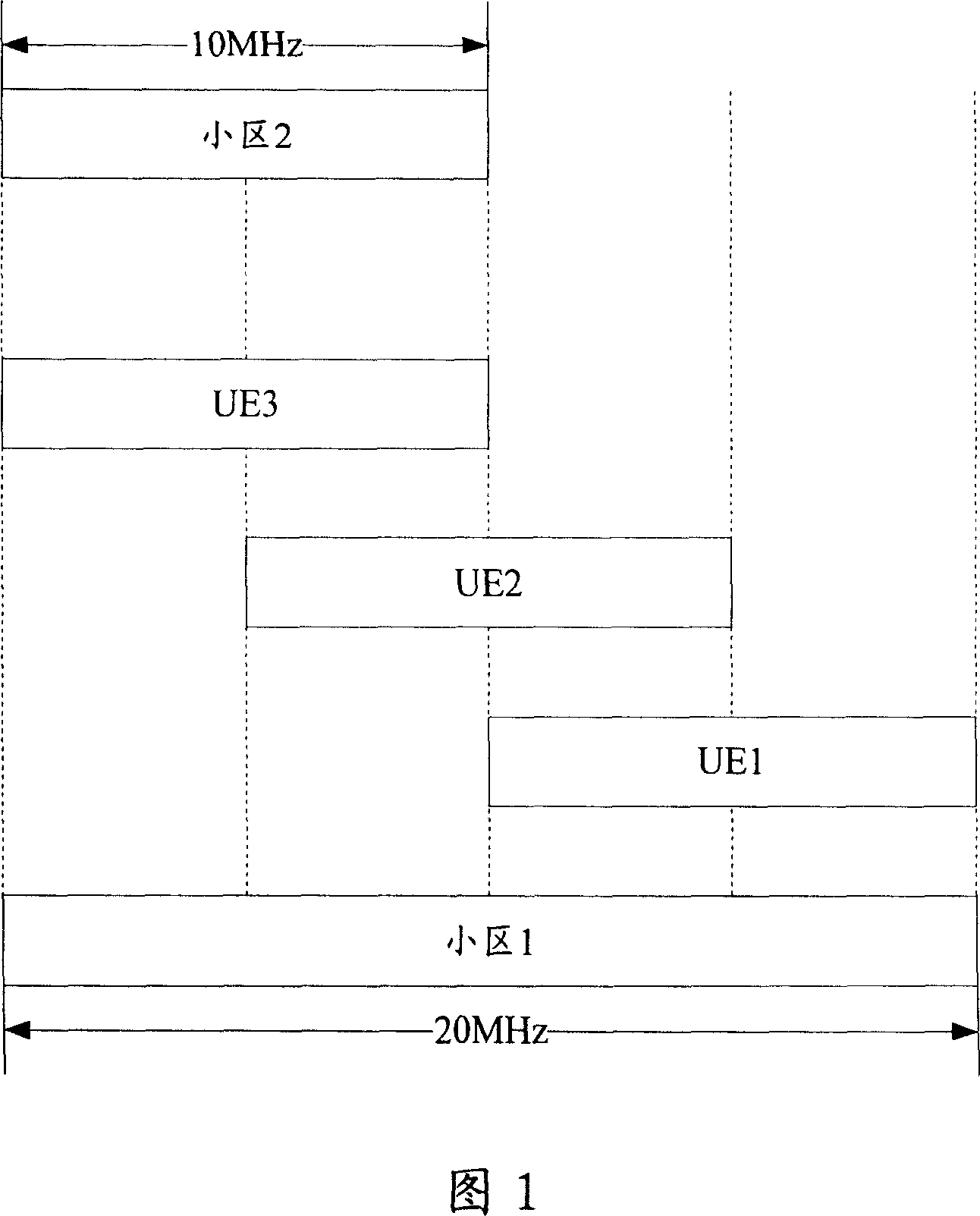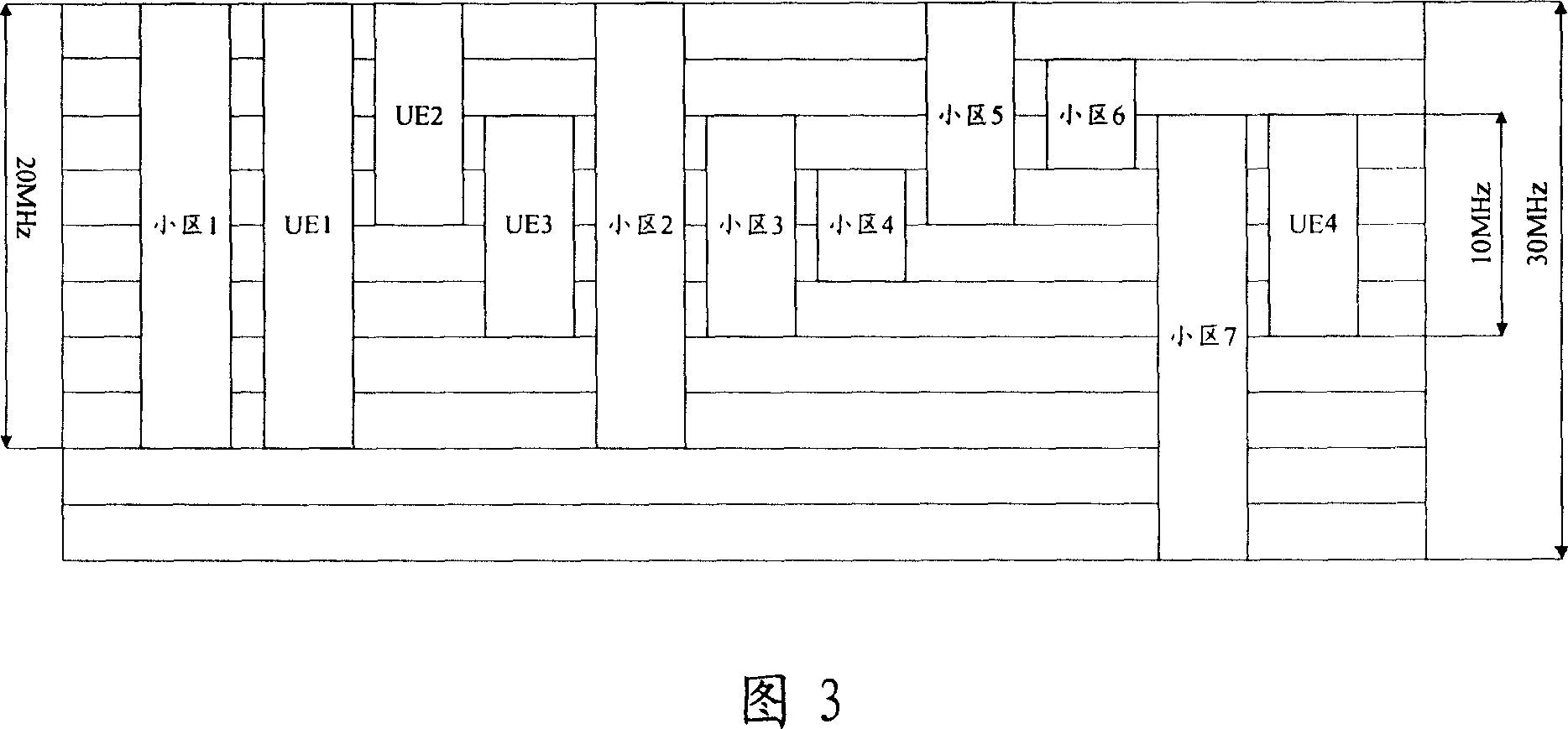Method for measuring adjacent cell and user terminal
A technology for user terminals and adjacent cells, applied in the direction of electrical components, radio/inductive link selection arrangements, selection devices, etc., can solve the problem that cell information cannot meet the needs of LTE communication systems, etc.
- Summary
- Abstract
- Description
- Claims
- Application Information
AI Technical Summary
Problems solved by technology
Method used
Image
Examples
Embodiment 1
[0086] Embodiment 1: The process flow of this embodiment is shown in Figure 4 or Figure 5, including the following steps:
[0087] Step 401: The network side sends a system message or a dedicated measurement control message. The message includes but is not limited to the measurement type, measurement parameters, neighbor cell information or any combination of the above information. The message may also include measurement gap information. The information is mainly to tell the measurement gap for performing inter-frequency measurement; where the measurement type includes intra-frequency measurement or inter-frequency measurement, and the measurement parameters can be Es / Io, etc. The information of neighboring cells includes but is not limited to: cell identity, frequency band of the cell information, the center frequency of the cell, or any combination of the above information. The frequency band information of the cell reflects the bandwidth of the cell, which can be represent...
Embodiment 2
[0111] Embodiment 2: The network side knows the bandwidth capability of the UE, and the network side determines the specific measurement type and instructs the UE to perform the measurement according to the information of neighboring cells and the bandwidth capability of the UE.
[0112] The process flow of this embodiment is shown in Figure 6, including the following steps:
[0113] Step 601: The network side determines the measurement type according to the operating frequency band of the UE, the bandwidth capability of the UE, the center frequency of the adjacent cell of the UE, frequency band information or any combination of the above information. There may be multiple neighboring cells of the UE, and the network side needs to determine the measurement type for each neighboring cell. The specific process is as follows:
[0114] First select a neighboring cell as the target neighboring cell, and judge whether the UE can perform intra-frequency measurement on the selected t...
Embodiment 3
[0118] Embodiment 3: The network side instructs the UE to perform co-frequency measurement, and determines the measurement type according to the operating frequency band of the UE, the bandwidth capability of the UE, the center frequency of the neighboring cell, the frequency band information of the neighboring cell, or any combination of the above information. The same-frequency neighbor cell information measured on the same frequency.
[0119] The process of this embodiment is shown in Figure 7, including the following steps:
[0120] Step 701: The network side first selects a target neighboring cell based on the known neighboring cells of the cell where the UE is located, and judges whether the UE can perform a target neighboring cell based on the bandwidth capability of the UE, the current operating frequency band of the UE, and the information of the target neighboring cell. For co-frequency measurement, if possible, add the information of co-frequency neighboring cells, ...
PUM
 Login to View More
Login to View More Abstract
Description
Claims
Application Information
 Login to View More
Login to View More - R&D
- Intellectual Property
- Life Sciences
- Materials
- Tech Scout
- Unparalleled Data Quality
- Higher Quality Content
- 60% Fewer Hallucinations
Browse by: Latest US Patents, China's latest patents, Technical Efficacy Thesaurus, Application Domain, Technology Topic, Popular Technical Reports.
© 2025 PatSnap. All rights reserved.Legal|Privacy policy|Modern Slavery Act Transparency Statement|Sitemap|About US| Contact US: help@patsnap.com



